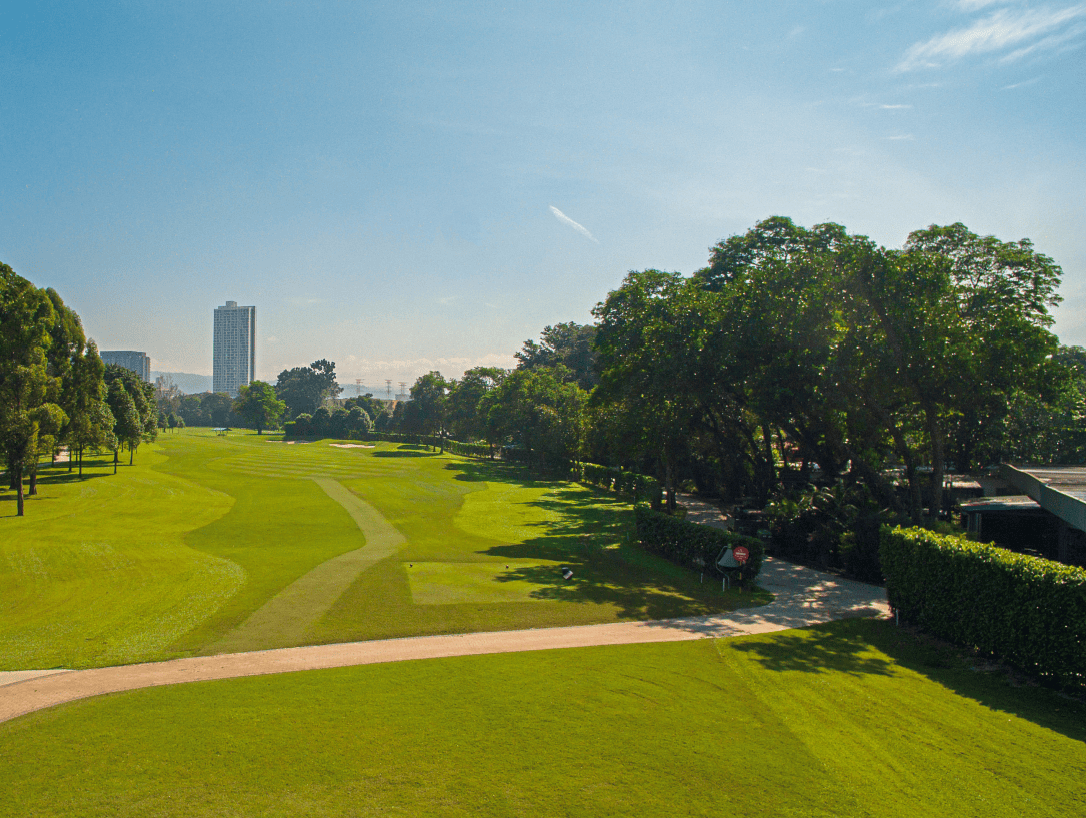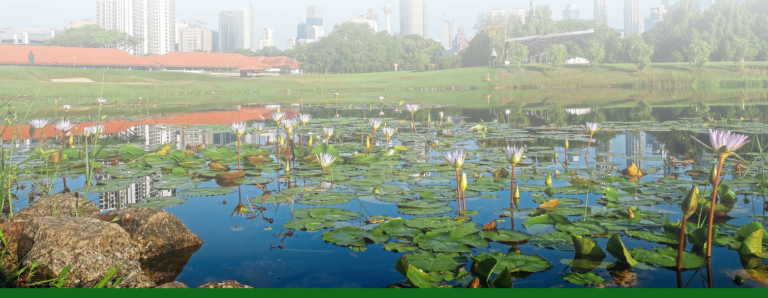Getting the Approval
It was a bit of a rush getting to the approval stage. The Committee was of the view that if we were to wait for all the detailed plans and drawings to be produced and cost out, it would take many months, and would stretch the timeframe of the project beyond the anticipated maximum two-term limit of the current Committee members. If that should happen there was a substantial risk that the project may stall. Any such event would cause inconvenience to Members. But haste, even though justified, had its risks, as we shall see.
As this was considered the biggest project undertaken by the Club since the decision to relocate here from Petaling Hills in 1920, a massive 41-page “information memorandum” was prepared to explain to Members the merits of the proposal, and how it would help the RSGC regain its lost status. The project cost was estimated at RM18.9 million.
At the extraordinary general meeting held on 30th January 2005, a large number of Members turned out. It was not every day that such a proposal was placed before them. After a lengthy power-point presentation of the key aspects of the proposal by the Green Convenor, Michael Low Chee Kein, the motion was put to a vote. An enthusiastic roar of approval erupted, followed by raucous shouts of “let’s get on with it”. It seemed like the entire hall gave its approval, with no objections. So overwhelming was the response that the President, who was in the chair, got caught up with it and he forgot to call for a proper count of the vote, but declared that the motion was carried by popular acclaim.
As Members began to file out of the hall in confusion, some to pick up their voting slips, others thinking that the motion was already carried, someone pointed out to the Chairman that a proper division had to be called. But it was too late to get the over-enthusiastic Members back into the hall. A fresh meeting had to be called.
With the need to comply with legal requirements, the follow-up meeting was called for the 28th February. It was another large gathering, but this time around the Captain chaired in place of the President who could not attend. With an overwhelming majority of 82 % of the votes the project was approved despite some expected objections from the tennis fraternity on account of the relocation of the tennis courts.
At this meeting, Members were informed of two significant changes to the earlier proposal. Instead of Tifdwarf greens and Zoysia Matrella fairways, Tifeagle was proposed for the greens and Seashore Paspalum for the fairways. In the interval between the meetings, the Captain and the Green Convenor together with Anthony Tan had made a trip to Bangkok to see first hand the nursery from which grass stolons were to be supplied. There a decision was made to switch grass. More of this story in a later section.
Continuous Improvements and the Rubberized Budget
The budget that was approved by Members was based on the conceptual master plan that had few details. Based on their collective experience, and using rule-of-thumb cost estimates, the consultants produced a cost estimate. When the tender bids were opened, it became apparent that the approved funds were insufficient to complete the project. The Club had under-estimated. The Committee had no choice but to take the proposal back to Members for more money rather than to proceed with an undersized budget.
This meant another delay. At the third extraordinary general meeting, Members, to their credit, continued to back the Committee, and gave their approval for the enlarged sum of RM21.0 million, an increase of RM2.1 million.
This sum would also eventually prove inadequate, as continuous improvements were made to the original design as the project progressed. There were requests to improve surface drainage through sand capping and other improvements, and these additional costs ate deeply into the project contingency sum. Eventually the budget was increased by a further RM5.3 million to RM26.3 million.
2nd Nine New Course
Pressing the Green Button
With the budget of RM18.9 million approved, the contract could finally be awarded to Tang Sung Lee Sdn. Bhd., who had submitted the lowest bid, and who had the best record for recent golf course construction work.
The project was divided into four phases, each encompassing nine holes, with a completion time of 31 months from handing over. The plan was to start with the 2nd Nine Old to be followed by the 2nd Nine of the New Course, then the 1st Nine of the Old Course, and finally the 1st Nine New. But within a short time a better phasing plan was devised and implemented – 2nd Nine Old, 1st Nine New, 1st Nine Old and finally 2nd Nine New. This plan had the advantage of better traffic management of heavy construction vehicles and it minimised disturbance to golfers.
The RSGC was a big and busy club. The challenge that confronted the Committee was how to carry out the works and yet provide Members with a minimum of two nines to play on at all times, as was promised. This was a key condition that won the support of Members for the project. Many of the voting Members had lamented that they were old, with not many good playing years left, so whilst they supported change, they also wanted to see that the project did not take too long. In the meantime, they wanted their golfing rights to continue uninterrupted. A few in fact morbidly remarked that they might not be around to see the job completed.
Site possession was handed over to the contractor on 1st September 2005, and they rushed into construction in mid-October, just in time to catch the usual yearend monsoon. It turned out to be one of the wettest on record. That November and December, 662 mm of rain fell, and the total rainfall for 2006 was about two and a half times the amount that fell in 2005. The bulldozers, however, continued to work in the incessant rain. They transformed the 1st and 9th of the New Course and the 10th and 11th of the Old Course, the first four holes to be worked on, into a quagmire.
That relentless schedule had a negative impact, as was subsequently discovered: the wet soil could not be compacted properly, and this contributed to soft, soggy fairways. Inadequate compaction, however, was not the only culprit. Other factors, too, played a part.
The Unsung Heroes.
The Selection Sub-committee that was formed to select the architect was an ad hoc group consisting of several Members who had some experience with golf course reconstruction and related matters. When the selection was over in November 2004 their job was essentially done, but it was felt that an oversight Sub-committee was necessary to oversee the reconstruction throughout its duration, to vet and approve major changes to the design, and to ensure that the project cost stayed within budget.
At the invitation of the Captain, everyone on the Selection Subcommittee agreed to stay on as part of the Reconstruction Ad Hoc Committee. The RAHC, chaired by the Captain himself, met once every one or two months to review progress. From its numbers two other Sub-committees were formed. One was the Variation Order Ad Hoc Committee, whose job it was to verify and approve variation orders, and to ensure that at all times the budget was not exceeded.
The other Sub-committee was the Tree Planting Sub-committee, which was given the mandate to devise a tree planting policy and to work with the architect on tree felling and replanting. They would review the trees that needed to be felled, and what species should be subsequently planted. Tree cutting was unpopular with Members even when it was desirable to do so. The work of this small group became crucial to maintain the “old world charm” and the parkland feel of the RSGC courses.
These Sub-committees worked mostly anonymously away from the eyes of most Members. But they played a crucial role in the reconstruction effort. The names of those who had served at one time or another on the RAHC, the VOAC and in the Tree Planting Sub-committee are listed below. Several individuals who played oversized roles deserve special mention.
John Eu, a former Putra Cup (the ASEAN amateur championship) player, and later a professional golf club manager with design and construction experience, played a key role in the selection of the architect as well as advising on the key elements of the design .
Tommy Lee, past Captain and eloquent Green Convenor, who spoke at the 1981 extraordinary general meeting, shared his invaluable experience gleaned from his many years of involvement in golf (he took part in the building of the much acclaimed Saujana Golf & Country Club and was president of the Malaysian Golf Association for many years).
Sze To Kok Yin, an architect who in his later years developed a special interest in golf course design, contributed his practical experience from building the Impian Golf Club, where he was instrumental in designing and implementing the tree-scape policy.
On the matter of soil and drainage the RAHC benefited from the contributions of Pang Leong Hoon, a former Director-General of the Irrigation Department, and Soong Kwi Ngin, a soil scientist by training, who brought his considerable experience as an oil palm planter and landscaper to bear. The Captain frequently called on his practical, in-depth knowledge in matters concerning soil and grass agronomy. On grass issues, Harikrishna, a professor of plant genetics, lent his expertise whenever called on.
The job of guardian of the budget fell to P. Krishnasamy. This was a difficult job as the RAHC was constantly proposing changes to the design, and these had a cost implication. He had therefore to evaluate the merit of each proposal before giving away another portion of the depleting budget. It was Krishnasamy’s job to extend the leash to its limit without breaking it. He did a commendable job and in this function he had the help of Chris Low, an architect by profession.
Course design was of course the big issue. The courses had to be built within the scope of the design brief. In Brett Mogg, the Club had a competent architect who had designed dozens of golf courses. Wong Hong Nung, a former national footballer turned golf professional, played a key role by commenting on the architect’s design and making many suggestions for improvements. Mohd Chudi Ghazali, a former Club and national amateur champion, also offered useful suggestions.
Joseph Baldwin Lopez, a former Club general manager who acquired considerable construction experience in other golf courses after leaving the employment of the RSGC, was perhaps one of the most ardent members of the RAHC and the Tree Planting Subcommittee. He never failed to attend meetings, and always made it to site inspections. His experienced eye picked out details that would otherwise have escaped attention.
Not everyone in the RAHC came with professional golf course qualifications. Anthony Tan, an accountant by professional, showed a surprisingly creative bent. He was an out-of-the-box type of thinker, and made many useful suggestions to the design, the most significant of which was the suggestion to relocate the tennis courts. It was bold, and had a tremendous impact on the overall design of the golf course.
The person who deserved the most credit for the reconstruction project, however, was the Captain, not only because he initiated the idea to do this ambitious project, but on several occasions when it ran into difficulties because of design and other issues, he also never wavered in his resolve that it would and should succeed. Instead of backtracking or compromising on costs or design, he pushed for increased funding two times so that the reconstruction could achieve its stated objectives. On such occasions he would rally the RAHC to face the new challenges, and used the substantial goodwill he had with Members to get them to continue to support the Committee.
The Captain was also deeply involved in design and execution issues that arose, frequently discussing them with the architect and engineer, often onsite. When the 2nd Nine Old was under construction, and encountered drainage problems, he would sometimes go out with the Green Convenor when it was raining heavily in lightning and thunder to check if the drainage was functioning. On one particular occasion, they were caught out in the field when a fierce lightning storm developed, with flashes landing close by. Crouching low and huddled together, he was reported to have said to the Green Convenor that they should stay apart and try to make it back to the clubhouse separately just in case lightning struck, in which case it would be better to lose one, not both!
On both the design and execution of the project the Green Convenor worked very closely with the Captain, mainly in a coordinating role between him, the RAHC and the consultants. Both were often seen making site inspections, which they did twice or more a week.
Other Members who served on the RAHC and made valuable contributions towards the project were Sam Ong Ghee Sim, Michael Yew Yee Thye, Bobby Lim Yat Foong, Muhammad Mustapha b. Hussain, Roslan b. Hassan and Patrick Wong Nam Keong.
Credit to YK Liew – Excerpt from the book ‘The RSGC: Veritably A Royal Heritage





